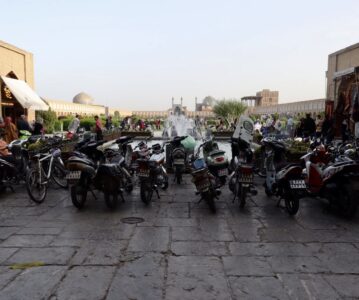We reach Dorud quite famished in the evening and are wonderfully invited by Sahra and her family to spend the night. The little brother Hasan quickly takes Louie into his heart and it is delicious to watch how the two talk to each other in their respective languages.
Sarah gives me an insight into a sad reality in Iran: At the age of 28, she was already married, but she lives separately from her husband back with her parents. Officially, however, she is still considered a married woman. Since she left her husband and not he left her, she has no chance to get a legal divorce. This right is reserved for men in the Islamic republic. The violent ex-husband and his family are now making life difficult for Sahar; spreading unjust rumors about her, and occasionally trying to pick her off. In such a situation, the black chador can be quite a useful piece of clothing… Legally, nothing can be done for Sahar. She will have to stay married on paper. All her parents can do is to take her back and protect her from her husband as much as they can.
Sahar and her mother spoil us with a wonderful evening and morning meal despite Ramadan and it is hard for us to leave this loving family. But we have some time pressure: Soon our Iran visa expires and we have to reach Isfahan in time to extend it for another month.
For once, the wind blows at our backs and we make swift progress. Surprised we realize in the evening that we have made almost 100 km and more than 1000 meters of altitude. The evening and the night are unexpectedly cool and only the next morning we realize that we are well above 2000 meters again! This high plateau is really cool. The agriculture, settlement and the landscape would never let assume that. But the cold is explained in the best way and we are not really angry about it after our hot detour into the lower areas.
The last section before Ishfahan leads us for a good two days along the winding course of the Zayanderud River. The river has carved a deep, wonderfully green valley in the otherwise barren plateau and even allows the cultivation of rice!
The entrance to the big city is rather unpleasant: We still have a tailwind, but we can only drive on the main road, which at some point turns into a highway. The traffic is dense, fast and nerve-wracking and completely exhausted we arrive at our warmshower host Reza in the late afternoon.
Now we are busy for a few days with visa office (very tedious!), route planning and exploring the city.
The countryside around Isfahan is very dry and seems a bit desert-like. Sand-colored rocks with bizarre shapes frame the city and trees and greenery grow only where irrigation lines have been laid. It is therefore somewhat surprising how green the city is. We drive through endless avenues, through huge parks, water features and flower plantations. Only- all that is left of the huge Zayanderud River, which once flowed through the city, is a wide, dry riverbed. “The river is being diverted,” Reza explains to us. “In huge pipes, we channel the remaining water to Yazd and other desert cities,” he says. Apparently, the river does indeed still carry water from time to time, but presumably this only occurs in ever-smaller windows of winter and spring. A city the size of Isfahan with all its wonderful trees and parks can easily swallow a whole river…
Isfahan is our first big city since Tabriz and we have to get used to the noise, the anarchistic driving, the intersections, the crowds and visual distractions. Still, it’s a great feeling to explore this city steeped in history on our unladen bikes. One small downer is that during Ramadan, all restaurants and snack stands are closed during the day. So one of our favorite pastimes- nibbling our way through the local street food- is eliminated. Instead, we buy our usual picnic together: Bread, yogurt, fresh vegetables and look for a corner in a park, protected from the view, to fill our growling stomachs.
Of course, we spend some time in and around the huge Naghshe Jahan Square and admire the Persian architecture from the Safavid era. The long park is framed by a souvenir bazaar, where all the merchants seem to speak at least five languages. Here we are no longer approached out of pure interest, but all conversations sooner or later lead to: “I also have a store very close from here. We sell beautiful carpets and kilims. Do you want to see it?” No, we don’t, very sorry. We like even more the less known mosques of the city center. Here we stay undisturbed and meet again Iranians without sales pressure. Reza takes us on a long drive into the extensive city gardens. Here, once as today, food was grown for the supply of Isfahan. The old structures of the irrigation canals are largely preserved and it seems unbelievable that such an extensive, original agricultural area exists in close proximity to the big city.
Finally we are able to pick up our visa at the police station and we get ready for our next leg of the journey. We have decided to skip the famous desert city of Yazd and settle for the offshore desert town of Varzaheh. A dead-straight and uneventful road takes us directly there in a long day’s drive (125 km!). The area is flat and the temperatures warm. The sand-colored town has a very special charm. The houses look old and traditional and we spy some of the wind towers that people used for cooling in times before electricity and air conditioning. A tower-like roof construction directs the wind into the living quarters and the steady breeze makes the heat a little more bearable. We especially like the old mosque. Beautifully simple yet noble in design, it offers a quiet, cool place for contemplation. A boy is reciting some suras from the Koran with his friend. His clear voice resonates beautifully up the white plastered walls and the harmonious sound enchants us.
Here begins the desert. Right at the city limits there are real sand dunes, which are well used for tourism. We just watch the spectacle from a distance and after a short stop at an old camel driven mill we drive into the dry adventure. The desert is definitely fascinating and not at all monotonous. Sometimes it seems lifeless, then again it is dotted by thorny bushes and a little later it even offers habitat to single, low trees. We admire the plants, which despite the dryness here somehow come to bloom and give the wasteland splashes of color.
We are lucky and towards evening a small oasis comes into view. Some old caravanserais are located here, reminding us that traders and travelers passed along this route long ago. We pitch our tent in a wind-protected courtyard of the ruins and are happy about this special place to spend the night.
In the nearby settlement we refill water and food and drive the whole day in the wasteland. Today the wind blows against us and makes the driving a bit more severe. In this world area obviously white marble is mined. The whole day we are overtaken by big trucks, on whose open loading areas single stone blocks are lashed. We assume that this road exists primarily because of the marble mining. The search for a suitable camp site is a bit difficult today. The wind is so strong that camping is almost impossible. With our last strength we head for one of the marble quarries and indeed Louie discovers a single windless corner after some searching. Spending the night in the marble quarry with a magnificent view – not bad after a day in the blazing sun.
Translated with www.DeepL.com/Translator (free version)


